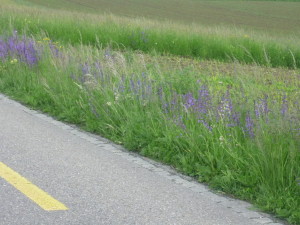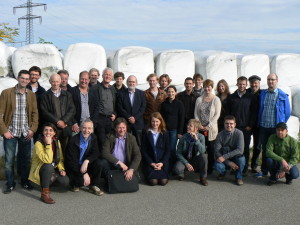 Converting organic matters from European urban and natural areas into storable bio-energy
Converting organic matters from European urban and natural areas into storable bio-energy
The energetic utilisation of biomass has an important role for the achievement of the ambitious aims of EU to increase the share of renewable energies. Against this background the project COMBINE aims at opening-up of abandoned urban, natural and agricultural areas for the energy production. This will be achieved through the regular, extensive use of these areas and the energy recovery of biomass by means of an innovative concept, which builds on the use of a technology called “Integrated Generation of Solid Fuel and Biogas from Biomass (IFBB)”.The method was developed by the University of Kassel (coordinator of the COMBINE project) and allows to convert biomass considered as waste up to now (e.g. green of roadside verges) into a valuable energy resource. The key is a mash that is made up from green waste and water. The method of  mashing is known from the brewery: When brewing a grain-water mixture is heated for several hours, while starch is converted into sugar. In the IFBB, however, the maceration process takes only about half an hour. Then the mash is pressed and is separated into a solid (press cake) and a liquid fraction (press liquid) – both valuable products. The press cake can be used as a solid fuel, and the press fluid for the production of biogas and electricity. After drying, the press cake represents a high-quality and storable fuel.
mashing is known from the brewery: When brewing a grain-water mixture is heated for several hours, while starch is converted into sugar. In the IFBB, however, the maceration process takes only about half an hour. Then the mash is pressed and is separated into a solid (press cake) and a liquid fraction (press liquid) – both valuable products. The press cake can be used as a solid fuel, and the press fluid for the production of biogas and electricity. After drying, the press cake represents a high-quality and storable fuel.
 The COMBINE partners from Germany, Belgium, France and Wales met in October in Baden-Baden, where the only large-scale IFBB plant is located. This plant together with a mobile demonistration plant is part of the project strategy to demonstrate the feasibility of the IFBB approach with biomass such as set-aside meadows, road- and railroad-side grass and to estimate the socio-economic effects of the approach in the partner regions and therefore contribute to its regional and interregional integration.
The COMBINE partners from Germany, Belgium, France and Wales met in October in Baden-Baden, where the only large-scale IFBB plant is located. This plant together with a mobile demonistration plant is part of the project strategy to demonstrate the feasibility of the IFBB approach with biomass such as set-aside meadows, road- and railroad-side grass and to estimate the socio-economic effects of the approach in the partner regions and therefore contribute to its regional and interregional integration.

